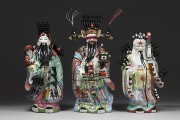This exhibition is located in the DuPlessis Building on North Terrace it is a large and somewhat dark space and an excellent venue to showcase these contemporary works. It is sadly ending on the 26th of August. Sue Kneebone studied at the South Australian School of art, University of SA and obtained her PhD in 2010. She is primarily interested in assemblage and photomontage. Her work spans a variety of topics; however, she seems to enjoy utilising objects with a special significance. She is also known for her environmental artworks which have touched on a variety of themes such as colonial farming practices. Objects such as the ones in her work; “Planning for Paradise, 2012” can evoke mnemonic triggers in the viewer, awakening an understanding of deep issues on a personal level.

The dominant feature of this piece is the stark black colonial table that sits in the corner of a room. An array of large blackened camel bones are strewn across it and a wire framed chair is nestled at the head of the table. The chair seems to hover, it has no legs or even a base on which to sit and it is attached table top by its curved arms.

 In the background of this morbid banquet scene are two candelabra; though they do not hold candles, instead, one cradles three emu eggs, and the other three abalone shell halves. A picture in a simple frame adorns the stark white walls and overlooks the table. It is visually distinct from the rest of the scene and also provides a clue to meaning of this work. The statue of Sir Thomas Elder; normally a feature of Adelaide’s North Terrace, is shown in an altogether different location. The early colonial philanthropist now finds himself on an eroded, dusty stretch of farmland. One point of note is that amongst many other things, Elder is responsible for the introduction of camels to help open up the outback.
In the background of this morbid banquet scene are two candelabra; though they do not hold candles, instead, one cradles three emu eggs, and the other three abalone shell halves. A picture in a simple frame adorns the stark white walls and overlooks the table. It is visually distinct from the rest of the scene and also provides a clue to meaning of this work. The statue of Sir Thomas Elder; normally a feature of Adelaide’s North Terrace, is shown in an altogether different location. The early colonial philanthropist now finds himself on an eroded, dusty stretch of farmland. One point of note is that amongst many other things, Elder is responsible for the introduction of camels to help open up the outback.
 As you walk around this lonely, slightly uneasy scene; you begin to connect the static components of the puzzle together.
As you walk around this lonely, slightly uneasy scene; you begin to connect the static components of the puzzle together.
The organic components are juxtaposed with early colonial furnishings. The items conjure feelings of association; yet, these feelings are difficult to grasp. Nature and early colonial culture have come crashing together with dire consequences. What we are served up on the table may be the remnants of long dead camel; but it is a feast we are not welcome to participate in. The carvers chair at the head of the table seems hospitable and comfortable at first; yet, it is an illusion a hazy mirage. It is hollow.

The candelabra burn emu eggs; and abalone, fruit of the land and sea. There is no doubting the impact the early settlers had on the countryside. Unbeknownst to them their unsustainable farming methods have devastated much of the land. If only they might have foreseen the dystopian future that their ancestors would inherit.
The picture on the wall is of Sir Thomas Elder; a man who came out to this country with dreams which were ultimately fulfilled for him. Amongst other things he was a pastoralist who owned a stretch of country larger than his native Scotland. Though now much of the land on which his cattle used to graze is wasteland. Sue Kneebone has removed his statue from North Terrace and planted it into the reality of the contemporary eroded landscape so that he might witness this legacy.

This work is one to ponder. Will the people of the future look back on us; and say to themselves, “If only they could have known?”




I would have loved to have seen this when in SA recently. After travelling round Australia (mostly NT and WA) for 3 months, this show really resonates with me…